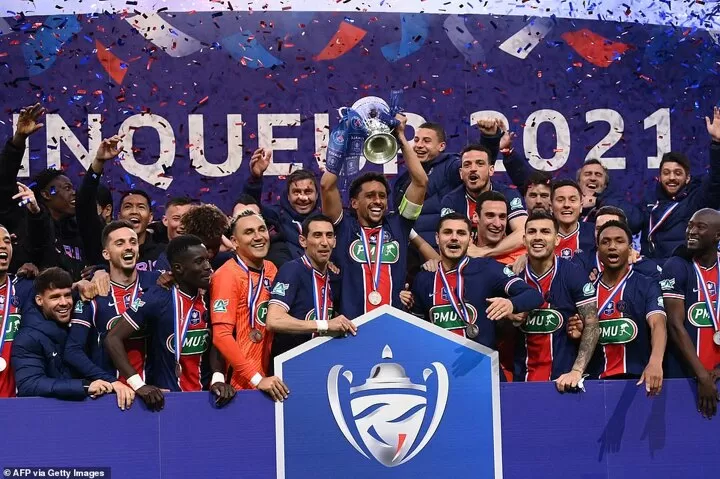
Ligue 1's Salary Landscape: Who's Earning What in 2025?
As the 2025 season unfolds, the spotlight on Ligue 1's financial dynamics has intensified, particularly regarding player salaries. At the forefront of this discussion is Paris Saint-Germain (PSG), whose reported wage bill of approximately €400 million starkly contrasts with the financial realities faced by many other clubs in the league. For example, teams like Angers SCO and Troyes AC operate with budgets that are less than €30 million, illustrating a significant economic divide that raises urgent questions about the competitive balance within French football.
 PSG star Kylian Mbappé is among the highest earners in Ligue 1, reflecting the financial disparities in the league.
PSG star Kylian Mbappé is among the highest earners in Ligue 1, reflecting the financial disparities in the league.
Recent data reveals that the top players in Ligue 1 are not only securing lucrative contracts, but these earnings underscore the growing financial gap between elite clubs and their counterparts. Notably, Kylian Mbappé leads the pack, reportedly commanding a salary that is several times higher than players at smaller clubs. This disparity has implications that extend beyond mere numbers — it threatens the competitive integrity of the league itself.
The financial clout of PSG has allowed them to attract and retain some of the most talented footballers in the world, while other clubs struggle to keep their best players due to limited resources. For instance, Montpellier and Brest, which have traditionally produced promising talents, are finding it increasingly difficult to retain these players as offers from PSG and other wealthy clubs become hard to refuse. This trend has a direct impact on the quality of matches within the league, diminishing the competitive edge that once characterized Ligue 1.
Financial Disparities: The Stats Speak
A closer examination of Ligue 1's salary data reveals that the average annual salary for a PSG player hovers around €7 million, while a player from a club like Angers earns approximately €300,000 per year. This stark contrast is emblematic of a broader issue facing many leagues worldwide, where financial disparities contribute to uneven competition.
According to the French Football Federation (FFF), the average salary across Ligue 1 is around €1.5 million, but this figure can be misleading. The top 10% of earners, led by PSG, can skew the overall average significantly. For context, Neymar Jr.'s earnings alone could cover the salaries of multiple players from smaller clubs.
The implications of such disparities extend to club competitiveness and the league's appeal. As PSG continues to dominate, other clubs may struggle to attract fans and sponsors, leading to a vicious cycle where their financial struggles become self-perpetuating.
 Ligue 1 clubs face significant challenges in maintaining competitiveness due to salary disparities.
Ligue 1 clubs face significant challenges in maintaining competitiveness due to salary disparities.
The Response: Can Change Be Made?
In light of this troubling trend, the French Football Federation and Ligue de Football Professionnel (LFP) have come under pressure to address the financial disparities that threaten the league's future. Potential solutions include introducing salary caps and revenue-sharing models aimed at leveling the playing field. Such moves are reminiscent of strategies employed in other leagues, like the Premier League's financial fair play regulations, which seek to curb excessive spending and promote competitive balance.
However, implementing such reforms is fraught with challenges. Historically, clubs with financial power, particularly PSG, have resisted measures that could hinder their competitive edge. The fear of losing star players and slipping down the league table may make clubs wary of embracing salary restrictions.
Looking Ahead: The Future of Ligue 1
As fans eagerly anticipate the rest of the season, the overarching question remains: Can Ligue 1 find a way to balance financial might with competitive integrity? The potential answers to this question may well dictate the trajectory of French football for years to come.
Should reforms be enacted to address these disparities, we might see a return to a more competitive landscape, reminiscent of earlier seasons when multiple clubs could realistically vie for the title. Alternatively, if current trends continue unchallenged, we could witness a widening gap that diminishes the overall quality and appeal of Ligue 1, ultimately leading to a less vibrant footballing environment.
In conclusion, while clubs like PSG continue to shine, the looming question of financial equity resonates deeply within Ligue 1. As the 2025 season progresses, all eyes will be on how the league navigates these choppy waters — for the future of French football may very well depend on it.
Keywords
- Ligue 1
- Salaries
- PSG
- Financial Disparity
- Competitiveness